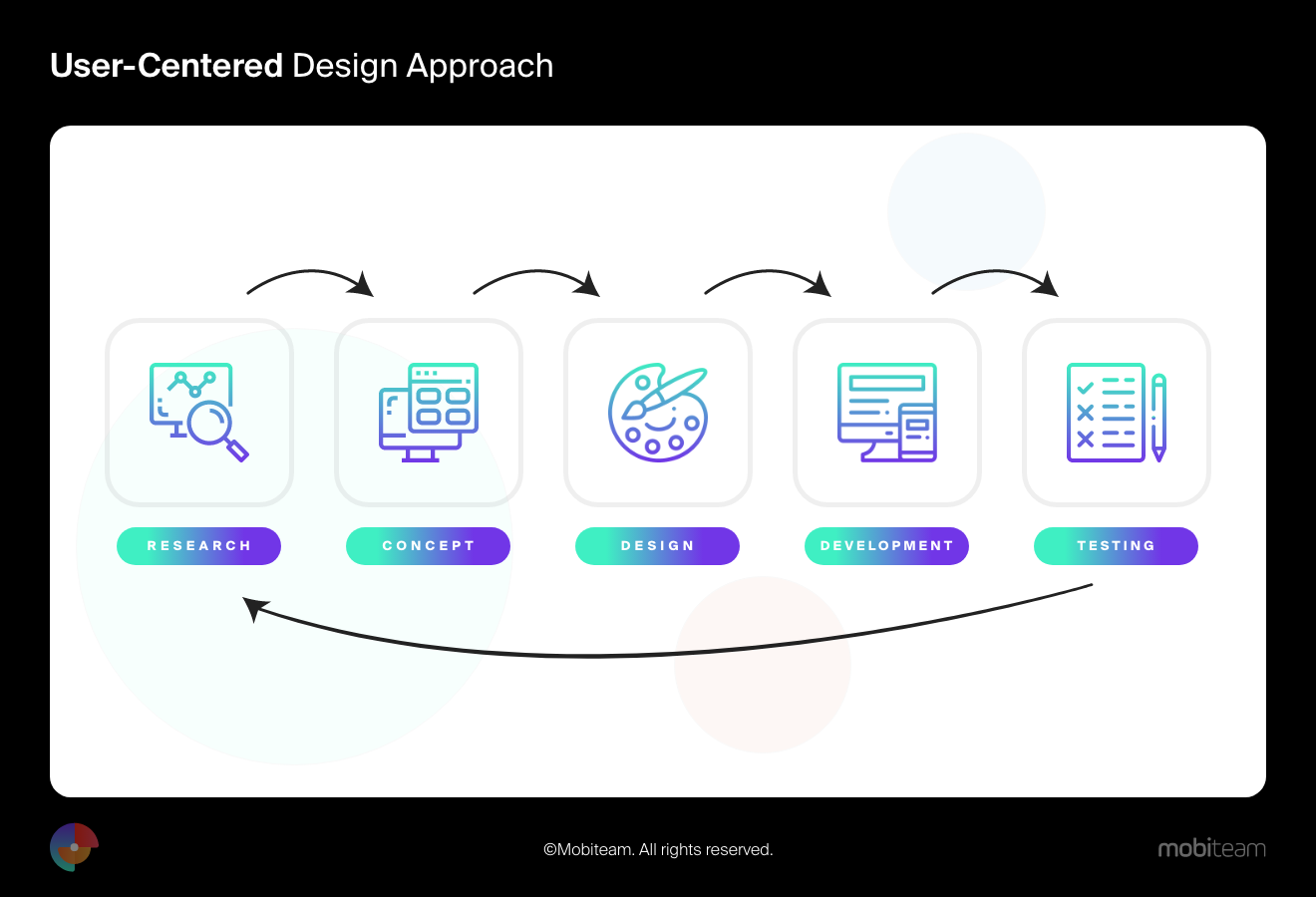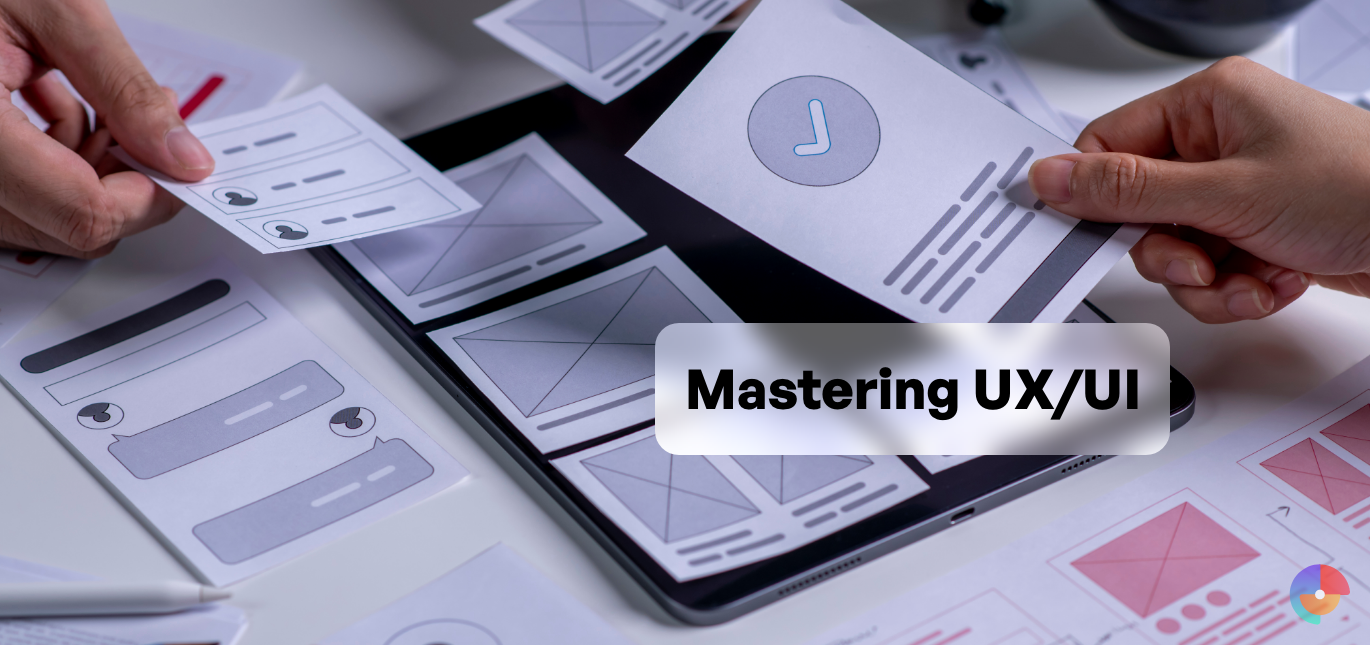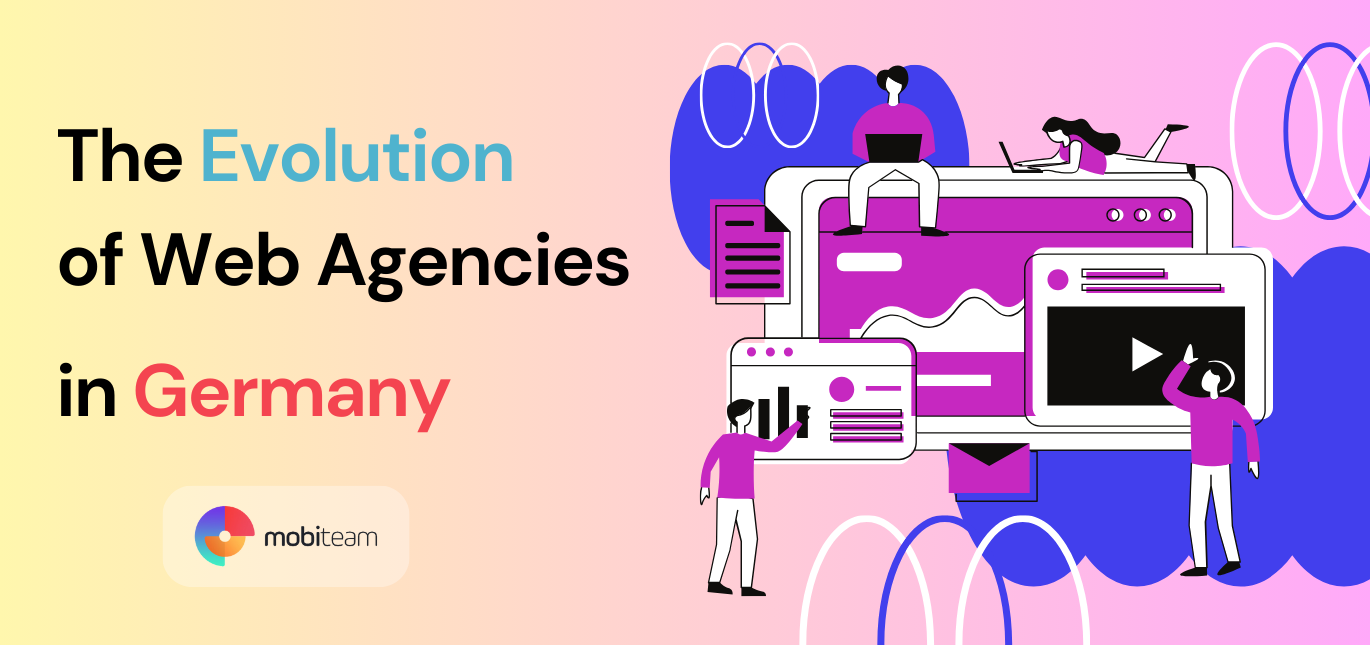UI and UX are frequently used synonymously, although they refer to separate design aspects. The visual and interactive components of a product, such as design, color combinations, fonts, and navigation, are the primary focus of the user interface (UI). User experience (UX), on the other hand, refers to the whole interaction and contentment that a user has throughout a product interaction, taking into account factors such as ease of use, accessibility, and emotional engagement.

The user-centered design approach of Mobiteam in Germany
Mobiteam follows the UCD (user-centered design) approach, executing four distinct phases per iteration. All members of Mobiteam in Germany work together to understand the user context and identify user requirements. Moving forward to the design phase, where they create solutions that meet the defined requirements.
Specifically, the team continues on to the evaluation phase, where they evaluate the design’s performance in relation to the user context and needs. They strive to ensure that the design meets the users’ specific needs and fits their context. The team performs additional steps until suitable evaluation findings are obtained.
A successful user journey case study
Mobiteam redesigned an outdated website that was visually unappealing and lacking modern functionality. The project name is Consileon. The goal was to create a new website with a beautiful layout, smart functionality, and improved user experience. Over several months, the team analyzed the existing website, identified strengths and weaknesses, and collected client requirements. They devised a comprehensive plan for the website revamp, ensuring a modern and user-friendly experience.
The team focused on the following key areas during the development process:
- Visual Appeal: Mobiteam redesigned the website with a fresh, visually appealing layout, incorporating brand identity color schemes, fonts, and images for an engaging user experience. The project required the development of a business-oriented layout while simultaneously maintaining a playful and youthful aesthetic. Additionally, the new website had to incorporate a substantial amount of content and pages from the previous version to ensure continuity and consistency.
- Functionality and Usability: The development team improved the website experience by enhancing navigation, optimizing page loading speed, and ensuring responsiveness across various devices and screen sizes.
- System Modernization: Due to the company’s establishment in 2001, a significant amount of content from the previous website needed to be transferred to the updated one. This task posed the greatest challenge during the system modernization. A meticulous, well-coordinated process with the client ensured smooth and accurate migration of articles, making the task less complicated.
Mobiteam and the client collaborated to create a successful website transformation that resulted in an attractive design, improved functionality, and an improved user experience. The redesigned website met and beyond the client’s expectations, demonstrating Mobiteam’s experience in web development and capacity to provide great outcomes.
Tips and best practices for creating seamless user experiences
A seamless user flow is crucial in UX design, as it guides users logically and intuitively through a website or app, ensuring quick and easy goal accomplishment, and ultimately improving the overall experience.
- User Understanding: Discover your users’ goals, needs, and challenges to adapt the user flow. With this knowledge, you may create a flow that is suited to their individual requirements.
- User Flow Definition: Define the logical actions users will take to accomplish their objectives while taking into account any possible obstacles.
- Simplicity: Use clear and concise language, avoiding unnecessary steps to ensure an easy-to-follow user flow.
- Visual Cues: Utilize eye-catching elements to direct users through the flow, such as arrows, button highlights, and color coding.
- Testing and Iteration: To develop the user flow continuously based on their insights, and get input from actual users.
- Accessibility: Design the user flow with accessibility to users with disabilities and diverse abilities.
- Device Adaptation: Optimize the user experience across a range of devices, taking into account varying screen sizes and input methods.
Wrapping things up
At Mobiteam, it’s important to remember that delivering a satisfying and efficient user journey is central to user experience. For their clients, reaching this goal requires an excellent user flow. Increased engagement, more customer happiness, and eventually more conversions for the company are potential benefits of this.






